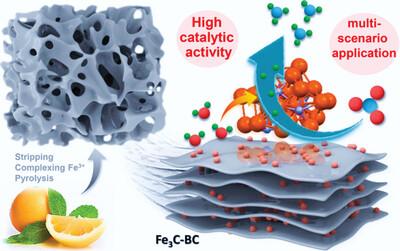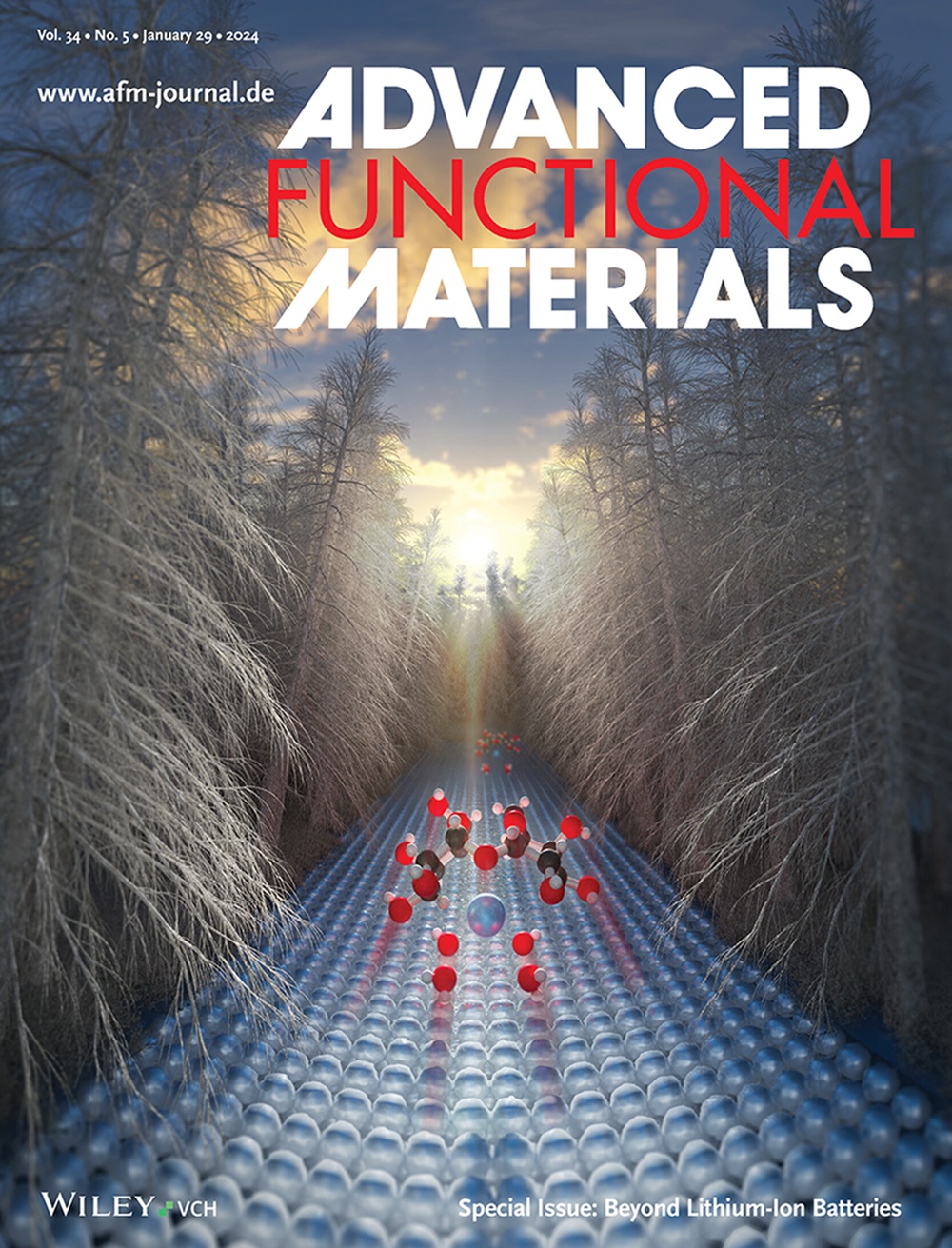Embedding Pure-Phase Fe3C Functional Sites Into Biochar Matrix for Multi-Scenario Electrocatalytic Ammonia Synthesis and Energy Conversion Utilization
IF 18.5
1区 材料科学
Q1 CHEMISTRY, MULTIDISCIPLINARY
引用次数: 0
Abstract
The rational design and development of application-oriented advanced functional catalysts is crucial for facilitating the conversion of nitrogen oxides into high-value ammonia. Herein, biomass derived from the pomelo peel, which is rich in metal complex groups and exhibits a metallic foam-like framework, is utilized as a precursor. Iron carbide (Fe3C) active sites are incorporated into the locally 2D, and globally 3D biochar structure, enabling the multi-scenario green synthesis of ammonia and integrated energy utilization. As a catalyst, Fe3C-BC achieved an ammonia yield rate of up to 102120.53 µg h⁻¹ mgcat⁻¹, with a maximum ammonia selectivity of 100%. A flow-based electrolysis system featuring Fe3C-BC not only facilitated the continuous synthesis of ammonia but also enhanced solar energy harvesting. Additionally, a nitrate battery employing Fe3C-BC as the anode exhibited high energy output and enabled self-driven ammonia synthesis, offering novel insights and operational solutions for the future of green ammonia production. Density-functional-theory calculations confirmed that Fe3C actively reduces the energy barrier of key steps in the eNitRR process while accelerating water dissociation to promote sustained proton supply. These findings collectively provide a promising foundation for advancing the green synthesis of ammonia, emphasizing both efficient catalytic performance and sustainable energy integration.

求助全文
约1分钟内获得全文
求助全文
来源期刊

Advanced Functional Materials
工程技术-材料科学:综合
CiteScore
29.50
自引率
4.20%
发文量
2086
审稿时长
2.1 months
期刊介绍:
Firmly established as a top-tier materials science journal, Advanced Functional Materials reports breakthrough research in all aspects of materials science, including nanotechnology, chemistry, physics, and biology every week.
Advanced Functional Materials is known for its rapid and fair peer review, quality content, and high impact, making it the first choice of the international materials science community.
 求助内容:
求助内容: 应助结果提醒方式:
应助结果提醒方式:


